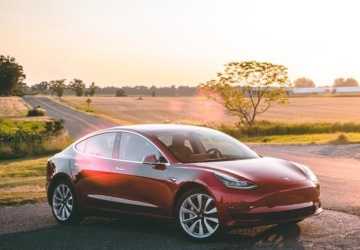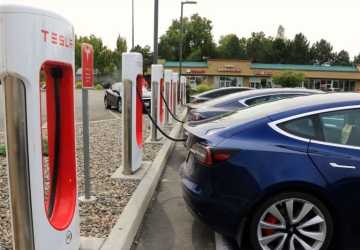Tesla’s electric vehicles: are they the future?
Author: Mirza Taha Hassan
With a 68% market share, Tesla continues to rule the electric vehicle industry in the US. With more EVs entering the market, this percentage is declining. However, the reduction is gradual, and the manufacturer is boosting the amount of US deliveries.
In its native market, Tesla has long dominated the industry of electric vehicles. The market dominance of Tesla is anticipated to decrease as additional EV choices become available and contribute to the expansion of the US EV industry, but for the time being, the US EV market remains largely reliant on Tesla's output and deliveries.

79% of fresh EVs registered in the United States in 2020 were Tesla models.
EV delivery numbers gradually increased, as did Tesla's costs, bringing the 2021 figure down to 69.95% but still remarkable.
Now that we have data for the first half of 2022, it is clear that Tesla is continuing to rule the US EV industry with a 68% market share. That figure is based on Experian registration data.
Considering that Tesla was able to preserve its market-leading position—or, more precisely, only lose 1% of the market—while other electric car manufacturers raised their US deliveries by 58% in the first half of the year, things start to look spectacular.
Tesla is demonstrating its value in terms of output. Elon Musk, the company's CEO, keeps claiming that the EV manufacturer's assembly efforts would give it a competitive advantage over rivals, and it appears he is correct. Since starting in 2008, Tesla has manufactured 3 million electric vehicles, just the tip of the iceberg.
At the yearly Tesla shareholder meeting, Elon Musk said that the business had just finished producing its 3 millionth vehicle. Musk said that less than 10,000 automobiles were produced by Tesla ten years ago.

Many Tesla enthusiasts were beginning to realize that the 3 million EV threshold was approaching quickly when Tesla announced in July that its Fremont, California facility had produced its 2 millionth vehicle.
Since then, Tesla has manufactured many additional automobiles at Fremont and three other facilities in China, Germany, and Texas.
Tesla restated its future production ambitions during the annual shareholder meeting, in case creating 3 million EVs since 2008 isn't amazing enough for you. Tesla wants to produce 2 million vehicles annually by the close of this year, in 2022.
For comparison, in 2021, Tesla manufactured nearly 900,000 EVs. It still intends to produce 1.5 million electrified cars in 2022, representing a 50% boost. Tesla's capacity to build 2 million vehicles annually by the end of 2023 will increase as the year goes on.
Tesla produced its first 3 million vehicles between 2008 and 2022, but it appears that it will make its next 3 million vehicles in a record-breaking amount of time.







